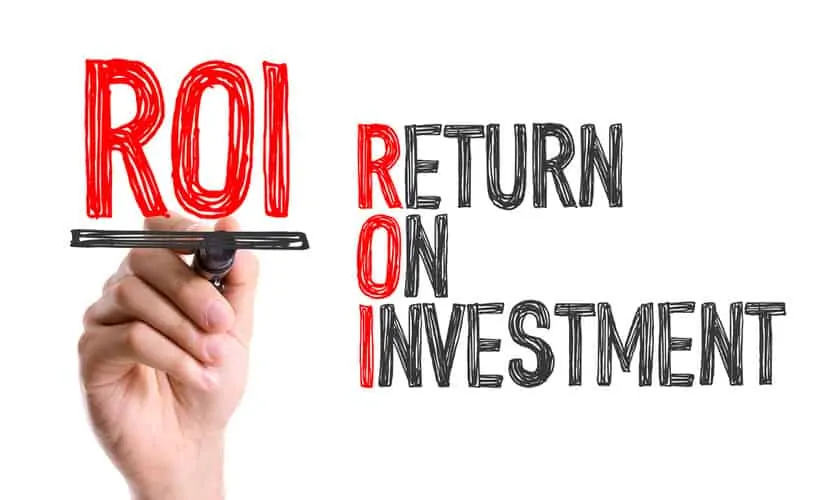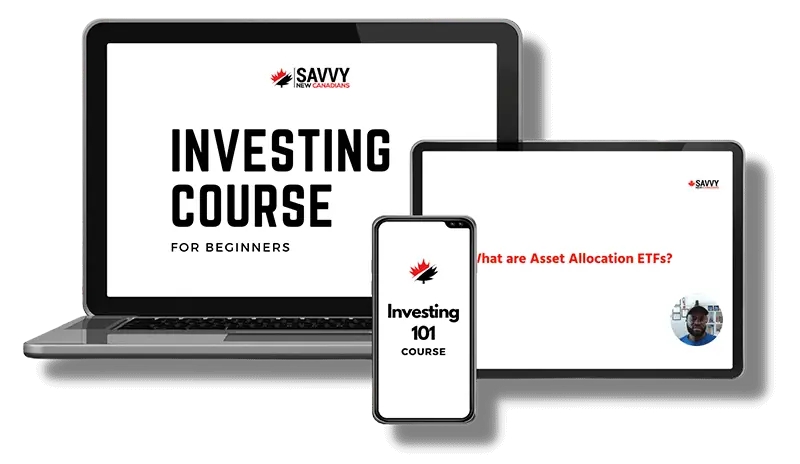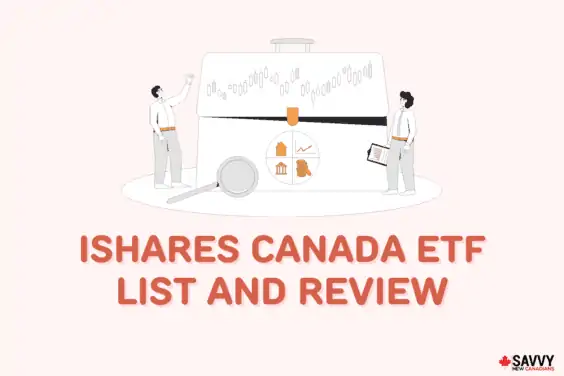As a beginner investor, how do you analyze a stock before buying it? What performance indicators should you use to assess and value a stock (equity) before investing in it? I answer this question here as a part of my INVESTING 101 series.
Investing in individual stocks and building a diversified portfolio can be challenging for a new investor.
I use the term “diversified” because you want to hold a basket of assets that includes a variety of investment products and which lowers your overall risk, compared to holding a single-asset portfolio.
It is easier to meet your portfolio diversification needs by holding one or a few globally diversified equity mutual funds or ETFs.
However, if you are venturing into the world of individual stocks, it is important you know some of the basic stock performance indicators below and understand what they mean.
This is a measure of profitability and shows how much money a company has earned for each of its outstanding common shares. It’s calculated as:
EPS = (Net Income – Preferred Dividends) ÷ Outstanding Common Shares
For example, Company XYZ has a net income of $100,000 and a total of 10,000 outstanding shares. If it pays its preferred shareholders a total dividend of $25,000, its EPS is:
$(100,000 – 25,000)/10,000 = $75,000 / 10,000 = $7.5 per share
The more profitable a company is, the higher its EPS. Higher earnings can show investors that a company will be able to pay more dividends now and in the future.
Analysts are often gung-ho about the EPS of a company, as they also use the information to compute its P/E and PEG ratios.
EPS can also be calculated as “diluted” EPS in which case all convertible securities and shares (convertible preferred shares, bond and stock options, and warrants) are taken into consideration in arriving at the total number of shares used in the denominator.
As with all other stock valuation indicators, EPS should not be looked at in isolation and has some limitations:
- EPS does not consider how much debt a company holds and its return on equity.
- Earnings figures are only useful when they are accurate. If a company manipulates its earnings, the EPS is useless.
- Companies can improve their EPS by buying back some of their shares.
Related: Best Online Discount Brokers in Canada
2. Price-to-Earnings (P/E) Ratio
This is one of the most popular metrics for valuing a stock. It shows how much investors are willing to pay for every dollar the company earns. The formula for deriving the P/E ratio of a stock is:
P/E ratio = Stock Price ÷ Earnings per Share
For example, if the stock price of Company XYZ is $30 and its earnings per share (EPS) is $2. Its P/E ratio is:
30 / 2 = $15
This means that investors are okay with paying $15 for every $1 of earnings.
The P/E ratio of a company is supposed to tell you whether its stock is “undervalued” or “overvalued.”
All things being equal, if the P/E ratio of a stock is lower than expected (compared to peers and/or the general market), it is said to be undervalued and selling at a bargain price.
If the P/E ratio of a stock is higher than expected, this could signal that it is overvalued (overpriced), and not a great buy.
Many analysts use a P/E ratio of 15 – 20 to determine a stock’s price attractiveness. In general, a stock with P/E ratio above “20” is expensive, while those under “15” are cheap.
The P/E ratio is just one of the metrics you should use when assessing a stock’s value. It may not tell you the full story about a high-growth stock.
A high P/E ratio may indicate that a company is experiencing a rapid phase of growth, boosting investor sentiments and its price, and it may still be an excellent buy – like Amazon was in the ’90s.
When comparing P/E ratios, it is important to compare “apples to apples,” i.e. companies within the same industry should be compared to one another.
3. Price/Earnings to Growth (PEG) Ratio
This involves dividing a company’s P/E ratio by the growth rate of its earnings, i.e.
PEG ratio = P/E ratio ÷ Annual EPS Growth
For example, if the P/E ratio for Company XYZ is 15, and the growth rate of its earnings over the last 5 years is 20%, the PEG ratio is:
15 / 20 = 0.75.
PEG looks at the combination of a company’s stock price, its earnings per share, and expected growth rate. By taking the company’s growth into consideration, it helps to correct for the implicit bias the P/E ratio has against fast-growth companies.
- A PEG ratio of 1 infers that a company’s stock is fairly priced
- PEG ratio “less than 1” infers stock is undervalued (cheap)
- PEG ratio “greater than 1” suggests that a stock is overvalued (expensive)
Like the P/E ratio, PEG has its own limitations:
- The company’s future growth rate is forecasted, and actual growth rates may differ significantly.
- The PEG may not reliably measure the value of large, well-capitalized companies with stable dividends but slow growth. These companies may be assessed as “overpriced” when that’s not really the case.
Related: How To Buy Bitcoin in Canada
4. Dividend Payout Ratio (DPR)
It measures how much of the after-tax income a company earns is paid out to its shareholders as dividends.
A company may choose to retain all its earnings, it may pay a portion out as dividends, and may even use its earnings to buy back shares.
The dividend payout ratio is usually expressed as a percentage and is calculated as:
DPR = (Total Dividends ÷ Net Income) x 100%
or
(Dividends per Share ÷ Earnings per Share) x 100%
For example, if Company XYZ has a net income after tax of $50,000 and pays out $25,000 as dividends, its DPR is:
$(25,000/50,000) x 100% = 50%
Dividend Payout Ratio can range anywhere from 0% to over 100%. A high DPR attracts investors who prefer dividend income to capital gains.
However, if DPR is very high, the probability that the company will be able to maintain the same level in the future is questionable. If DPR is cut in the future, the stock price will fall.
Mature companies, such as utilities, generally have a higher DPR than companies that are just starting out or are in their growth phase. Savvy investors will examine whether (or not) a company can maintain its DPR over the long term.
Unsustainable DPR levels could signal that a company is headed for trouble – it is no longer retaining profit for growth and will likely have to cut dividends at some point.
REITs and Mortgage Investment Corporations are required by law to pay out 90% or more of their profits which are then taxed in the hands of shareholders, so their DPR is generally high.
5. Dividend Yield
This is a measure of the annual dividend return provided by a stock based on its annual dividend payout and current share price. It is often expressed as a percentage and calculated as:
Dividend Yield = Annual Dividend per Share ÷ Current Stock Price per Share
For example, if a Company XYZ paid a total annual dividend per share of $5, and its stock currently trades at $50, the dividend yield of the company’s stock is:
5/50 = 0.10 or 10%.
The higher the dividend yield of a stock, the higher its desirability.
An investor can generate income from a stock in two ways: dividends and capital gains. Capital gains occur when you sell a stock for more than you paid for it.
Before you sell the stock, however, you can also generate returns by way of regular dividends. Companies with a solid history of paying dividends are a staple in the “dividend” investors’ portfolio.
A limitation of the dividend yield is that a high dividend yield may be a result of a company’s lower-than-normal stock price.

Related: Best Money Management Apps and Tools
6. Price to Book (P/BV) Ratio
This metric is used to measure the value of a stock by comparing its current market price per share with its book value per share. P/BV ratio tells us how much investors are paying for each $1 of book value.
The price to book ratio can be calculated using the formula:
P/BV ratio = (Market Capitalization ÷ Net Assets)
or
(Price per Share ÷ Net Book Value per Share)
Where,
- Market Capitalization = Market Price per Share x Total Outstanding Shares
- Book Value per Share is calculated as = Net Assets / Outstanding Shares
- Net Assets = Total Assets – Total Liabilities. These values can be obtained from a company’s balance sheet or statement of financial position.
Theoretically, a stock with P/BV ratio of less than “1” is seen as undervalued, while a P/BV ratio above “1” suggests it is overvalued.
In practice, P/BV ratios will vary between industry sectors, and you should be comparing companies in the same line of business. In summary, the lower the P/BV ratio, the better.
Some limitations of the P/BV ratio include:
- It is not very useful in assessing companies that carry a significant amount of intangible assets, since intangible assets are excluded from “book value.”
- How a company calculates depreciation may affect its net assets.
Related: Guaranteed Investment Certificates Explained
7. Return on Equity (RoE)
ROE measures how much return in dollars a company generates per dollar of equity invested in it by shareholders. It is expressed as a percentage and calculated using the formula:
ROE = (Net Income ÷ Shareholder’s Equity) x 100
Where,
- Shareholder’s Equity = Net Assets
- Net Assets = Assets – Liabilities
For example, if a Company XYZ nets a profit of $100,000 and its net assets (shareholders’ equity) is $1 million, its ROE is:
$(100,000 / 1,000,000) = 0.1 = 10%
ROE is a measure of efficiency and shows how a company uses the capital provided by its shareholders. The higher the ROE of a stock, the more profit it is expected to make, and the higher its stock value.
ROE value should be compared for companies within the same industry, and values for a company should be compared over time as well.
When looking at a stock’s ROE, it should also be compared with its P/BV. A high ROE and low P/BV may signify that a stock is undervalued, whereas a high P/BV and low ROE may be indicative of an overvalued stock.
Limitations of the ROE include:
- A company that uses more debt than equity may have a higher-than-expected ROE
- Net income can be inflated by accounting policies, e.g. due to the depreciation method used.
- Stock buy-backs and asset write-downs artificially inflate the ROE.
8. Debt to Equity (D/E) Ratio
This is one of the measures of a company’s financial leverage and is calculated as:
D/E = Total Liabilities or Debt ÷ Total Equity
D/E ratio shows how much debt a company has in relation to its equity. For example, if Company XYZ has a total debt of $500,000 and shareholders’ equity of $250,000, the D/E ratio =
$(500,000/250,000) = 2:1.
When the ratio is greater than “1,” it means the company uses more debt than equity to finance its operations, and vice versa.
Related: Robinhood Alternatives in Canada
9. Price to Sales (P/S) Ratio
This compares a company’s share price with its sales revenue. It can be used in place of the P/E ratio in cases where a company has no profit to report. The formula is:
P/S ratio = Market Capitalization ÷ Total Sales
or
Price per Share ÷ Sales per Share
Where “market capitalization = share price x number of outstanding shares”
For example, Company XYZ generated a revenue of $100,000 during the year, and its stock currently sells at $10/share. It has a total of 5,000 outstanding shares.
Price to Sales Ratio = Market Capitalization/Total Sales = (5,000 shares x $10)/100,000 = 0.50
A lower P/S ratio is more attractive as it shows investors are not paying much per dollar of revenue. In the example above, they are paying 50 cents for every $1 in sales.
A low P/S ratio could mean that a stock is undervalued. When using the P/S ratio, it should be used in conjunction with other indicators and for comparing similar companies.
Although you cannot compute a P/E ratio for a company that’s losing money (i.e. zero profit), a P/S ratio can still be calculated.
Limitations of the P/S ratio are:
- It does not take a company’s debt structure into consideration
- Revenue numbers can also be manipulated (like earnings)
- The P/S ratio does not look at profit. A company may generate a lot in sales and still record a loss.
10. Beta
This is a measure of a stock’s volatility or how its price/returns fluctuate(s) compared to a benchmark index (i.e. the market).
A beta value of “1” infers that the stock price moves in tandem with the market. A beta “less than 1” infers that a stock is less volatile than the market, and a beta “greater than 1” means that the stock’s price/return is more volatile than the market.
For example, if Company XYZ’s stock has a beta of 1.50, it means that the stock is 50% more volatile than the market. If the market return rises by 1%, the stock’s return (price) will rise by 1.5% (1.50 x 1%). If the market return goes down by 2%, the stock’s return will drop by 3% (i.e. 1.50 x 2%). If the stock’s beta is 0.70, it means that it is 30% less volatile than the market.
Higher-beta stocks are riskier than lower-beta stocks and will introduce more returns volatility (variance) when added to your portfolio.
Volatility is not necessarily a bad thing. A stock with a high beta (>1) can reward an investor with greater returns or may result in greater losses. Choose stocks that align with your level of risk tolerance.
- The beta of a stock is calculated by using regression analysis on returns data for the stock and representative index.
- A risk-free asset such as cash and treasury bills have zero beta.
- A negative beta occurs when an asset’s return is negatively correlated with that of the market.
Related: Investing Risks All Investors Should Understand
Closing Thoughts
Fundamental analysis can be very useful in assessing whether a stock presents hidden value and whether it can potentially make you some money.
Investors do not need to compute these basic ratios on their own as they are widely available on the internet (such as on Morningstar, Yahoo Finance, Google Finance, and Bloomberg). Note that for more detailed company financial information through these sources, you may need to pay for a subscription.
In addition to the financial measures above, you should also consider business fundamentals that show whether (or not) a business will remain profitable in the future.
These include its human capital (star executives/management), competitive advantage (such as patents and technology), the strength of its competition, and market share.
Related Posts:








This is a wonderful resource. Today, I just invest in mutual funds and ETFs. When I was in graduate school, I had to take a class in Financial Management. The list of ratios that you broke down in this post would have been a big help for that class.
@Dave: Thanks for your kind words. I mostly stick to index funds and ETFs as well…makes for less work and easier for portfolio diversification.
I love your Investing 101 series. I tend to be all about the dividends (baby) but lately I’ve been feeling the pull away from some of my dividend stocks and towards more index investing…
@Curious Frugal: I have always wanted to look more into the dividend side of things, but have not done so yet. I guess the idea of learning the ropes on a new thing has kept me at bay…I don’t know of anything simpler than buying the market and letting it do its thing. 🙂
These are great. I’ve noticed, though, that these numbers aren’t normally easily available. At least not in the Robinhood App. Robinhood seems to only have P/E ratio (sometimes!) and dividend yield. I notices that if you multiply these together, you’ll get the dividend payout ratio (DPR), since the price cancels out and you end up with with dividends/earnings.
@JoeHx: Yes, you are right! Investors seeking all these numbers usually have to dig around a bit. I have come across a few stock/ETF scanners that have all these numbers in one place, but can’t remember their names off the cuff right now. Thanks for stopping by!
Dave, Thank you for the information. It is very helpful for a new investor. Lisa
Thanks Enoch. I love the way you always break things down and make seemingly complex things plain. I have invested actively in growth and total market ETFs since I came to Canada and I’m following your investing 101 series like my life depended on it LOL.
@Vantage: Glad to hear it! 😉
Your write up suggesting 10 points evaluation on company performance index is really useful and can say, a kind of “Star Guideline for any Investor”. I have copied the suggested points without your permission to read at leisure, understand and apply in real life.
Great Read, Thank you!